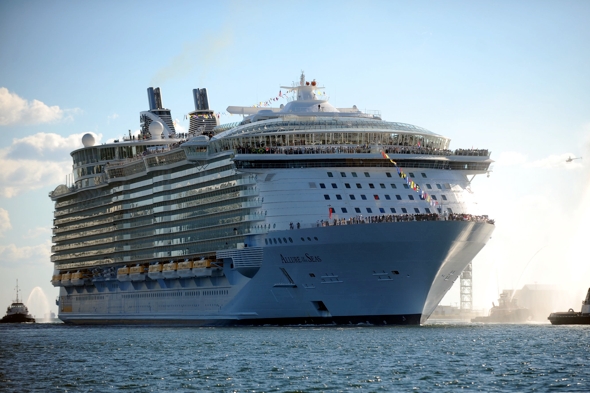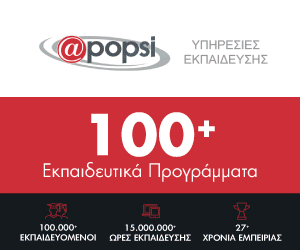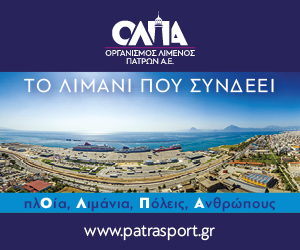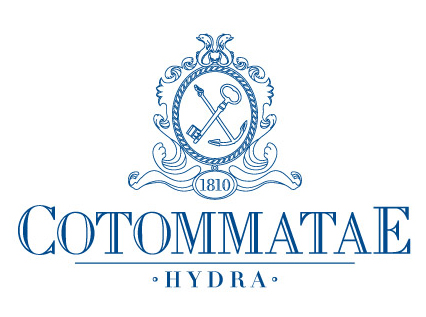6.39 million European passengers had a cruise holiday during 2014
1. The number of Europeans taking a cruise holiday has reached an all-time high
• In 2014, a record 6.39 million Europeans took a cruise, 30,000 more than in 2013.
• This marks a 0.5% growth of Europe’s source market compared to the previous year.
• The factors behind the reduction in the industry’s growth rate include a decrease in capacity in the Med and the continuing economic difficulties throughout much of the EU.
• While the year-on-year growth rate has considerably slowed down compared to previous years, it is remarkable that more Europeans than ever chose a cruise holidays in 2014 in spite of the continuing challenging economic conditions.
• The average annual growth in the last five years has been positive at 4.9%.
• This confirms that cruising remains an excellent holiday choice for millions of passengers in Europe and beyond, providing great value for money.
• We remain confident that Europe’s source market figures will continue to increase in years to come, not least because penetration rates still remain relatively low.2. Europe’s cruise industry continues to bypass the economic downturn
• The number of Europeans choosing a cruise holiday has increased by 44% since 2008, when the economic downturn began. The industry has enjoyed growth year-on-year.
• This is particularly remarkable if we consider that Europe’s economy has still not recovered to pre-economic downturn levels, having declined by 1.3% during the same period.
• For the Eurozone, the economy has shrunk by 2.9% in the same period.
• GDP growth in the EU remains sluggish. The pace of the recovery remains slow as Europe continues to struggle to leave the legacies of the crisis behind it. Growth last year was 1.3% (just 0.8% in Eurozone).
• In comparison industrial production in Europe has fallen by more than 10% since 2008.3. Growth of Europe’s source market has slowed down, but not stalled
• This year’s 0.5% growth rate may look disappointing compared to last year’s (4%).
• However, this is not due to a loss of interests in cruising in Europe, but rather explained by cruise lines’ individual commercial strategies, and a backdrop of continuing economic difficulties for much of the EU.
• In 2014 there was an 11.4% decrease in capacity deployment in the Med, as some cruise lines took existing ships to other waters, notably the Caribbean.
• This year-on-year fluctuation in deployment is usual to the extent that cruise lines’ deployment strategies are dynamic.
• With some ships that are currently under construction to be launched this year, we expect a 9.3% increase in capacity deployment in the Med in 2015. This will result on further growth in Europe’s source market.4. It is the trend that counts, and the trends remains positive
• We should not focus on year-on-year figures alone. It is the trend that counts and the trend since the economic crisis is strongly up in the vast majority of markets.
• The average annual passenger growth across Europe since the crisis began is 7.4%.
• The average annual passenger growth trend since the crisis began in Germany is 15.9%, France 15.2%, Italy 3.9% and UK 3.3%.
• Spain fell by an annual average of 1.4%, but economic conditions there have been particularly harsh. Other markets such as Scandinavia and Finland (24.7%), Austria (17.8%), Switzerland (20%) and Benelux (17%) enjoyed strong growth trends.5. Support from policy-makers and regulators is becoming increasingly critical to ensure the industry’s further growth in Europe
• We remain optimistic about the cruise industry’s outlook in Europe for years to come.
• However, other regions are increasingly challenging Europe’s position as the world’s number one tourist destination. Europe is gradually losing market share in world tourism.
• National and European policy-makers can help ensure the further growth of Europe’s tourism sector by fostering a favourable business environment. Examples:
o Adoption a smart, flexible visa code that facilitates the entry of legitimate third-country tourists into Europe.
o Draft environmental legislation that is workable, set on realistic targets and harmonised in a uniform way across the EU.
o Upgrade port infrastructure across the Continent to ensure that every major port can adequately cope with the industry’s needs.
o Invest in infrastructure connecting cruise terminals and the hinterland to improve tourists’ experiences in the ports and destinations that they visit and better capture the economic benefits generated by cruise tourism.6. Headlines per country/region
• This year Germany has become Europe’s first source market with 1.77 million passengers, increasing by 5%, mostly due to capacity increases from German cruise lines AIDA Cruises and TUI Cruises GmbH.
• Capacity was moved away from UK ports which, while leading to an increase in fly cruises to the Caribbean, resulted in an overall 4.8% decrease in the number of British passengers taking a cruise in 2014.
• Italy remains the third largest source market, despite a 3.1% decrease that is explained by the decrease of capacity deployment in the Med.
• France has achieved impressive growth (13.7%), consolidating itself as Europe’s fourth largest source market.
• Spain has continued to decline (–4.5%), due to the decrease in capacity in the Med and the closed operations of Iberocruceros.
• Scandinavia’s source market has increased by 5.6% this year.7. Germany
• Germany has become Europe’s first source market with 1.77 million passengers, increasing by 5%, mostly due to capacity increases from German cruise lines AIDA Cruises and TUI Cruises GmbH.
• In 2014 Germany accounted for 28% of the European market, up from 27% in 2013.
• New builds scheduled for 2015 (Mein Schiff 4, AIDAprima) could consolidate Germany’s ocean cruise leadership in Europe.
• Germany is also the market leader for river cruises.
• European destinations dominate the German cruise market, with the Med and Atlantic Islands accounting for 43% of the market visited by Germany-sourced passengers sourced (Northern European destinations account for 22%).
• The average annual passenger growth trend since the crisis began in Germany is 15.9%.8. UK & Ireland
• Following a few years of slow growth, the number of UK and Ireland ocean cruise passengers has declined by 4.8% to 1.64 million passengers.
• This was mostly due to lower ship capacity for the traditional UK port market and the significant shift in deployment of Mediterranean cruises to the Caribbean.
• This year-on-year decline should be seen in the context of a market that has grown ten times in less than 25 years.
• 2014 saw a 12% dip in UK port cruises and a 3% growth in fly cruises, which may be corrected with the launch of P&O Cruises’ Britannia and RCI’s Anthem of the Seas, to be based in Southampton between May and October. Princess Cruises’ Royal Princess is also returning to Southampton for spring and summer 2015.
• The average annual passenger growth trend since the crisis began in the UK is 3.3%.
8. Italy• Italy remains Europe’s third largest source market, despite a 3.1% decrease, with 842,000 passengers.
• This year-on-year decrease of the source market is best explained by the shift in capacity and deployment from the Med to the Caribbean.
• Despite the decline in the Mediterranean cruises, the Italian market is dominated by the Mediterranean as a destination with 79% of passengers in 2014.
• The market is also concentrated in terms of market share, with the top three operators controlling 96% of the market.
• The average annual passenger growth trend since the crisis began in Italy is 3.9%.
9. France• In 2014 France consolidated its position as Europe’s fourth European market with an impressive 13.7% increase, reaching 593,000 passengers.
• This was mostly due to an increase in departures from French ports.
• There was also an increase in capacity dedicated to the French market.
• Despite the Mediterranean being the most popular destination for French cruisers, with 63% of the market, the growth rate for Mediterranean cruises was much lower than the growth rates of the Caribbean and Northern Europe in 2014.
• The average annual passenger growth trend since the crisis began in France is 15.2%.10. Spain
• The on-going decline in capacity in Spain continued in 2014, with ships moving away from the Med, resulting in a 4.5% decline in the country’s source market to 454,000 passengers.
• During 2014 the cruise lines operating in Spain focused on improving the quality of the product rather than on increasing sales volumes, which decreased following years of strong growth.
• This year’s decrease was much softer than in 2013 (17%) and 2012 (18%).
• We are starting to witness a reverse in the trend, considering the planned capacity for 2015, and we expect market growth in 2015.11. Netherlands
• The Netherlands’ source market decreased by 4.4% in 2014 to 109,000 passengers, mostly due to the shift in deployment from the Med to the Caribbean.
• This resulted in a decline in Dutch passengers to the Med and an increase in Caribbean passengers, with Northern Europe remaining steady.
• The average annual passenger growth trend since 2009 is 8.4%.12. Belgium
• The Belgian cruise market continued its strong growth of 2013 into 2014 with a 6% increase to reach 73,000 passengers.
• The shift in deployment from the Med was reflected in a 9% contraction for passengers on Mediterranean itineraries.
• However, the Med still accounts for over 50% of Belgian cruise passengers.
• The average annual passenger growth trend since 2009 is 12.4%.
13. Scandinavia and Finland• Denmark
o The Danish market decreased by 1% to 37,000 passengers.
o With less reliance on the Med, the Danish market was less affected by the shift of deployment.
o The Med declined by nearly a quarter while the Caribbean increased by 14%.
• Finland
o The number of passenger halved from 24,423 passengers to 12,001 passengers.
o This was due to the withdrawal from the market by Kristina Cruises, which was the market leader with over 50% of the market.
• Norway
o After a year of strong negative growth, the Norwegian cruise market bounced back in 2014 with a 25% increase in passengers to 176,000.
o The growth was stimulated by Northern Europe cruises, which went up by 44% to 138,000 passengers.
• Sweden
o The Swedish market decreased by 7% in 2014 to 78,000 passengers.
o An 18% drop in Mediterranean cruises was partially offset by a 31% increase in Caribbean cruisers.14. Greece
• With an impressive 10% increase, there was a recovery in Greek cruise market in 2014 after two years of sharp decline due to the country’s on-going economic difficulties, reaching 18,441 passengers.
• The cruise product remains unknown to many Greeks, who are more used to taking ferries in order to reach island destinations where they spend their holidays.
• The Greek cruise market is highly concentrated in terms of destination with approximately 90% of the market historically accounted for by Mediterranean / Black Sea cruises.
Sidebar
20
Σαβ, Απρ



















